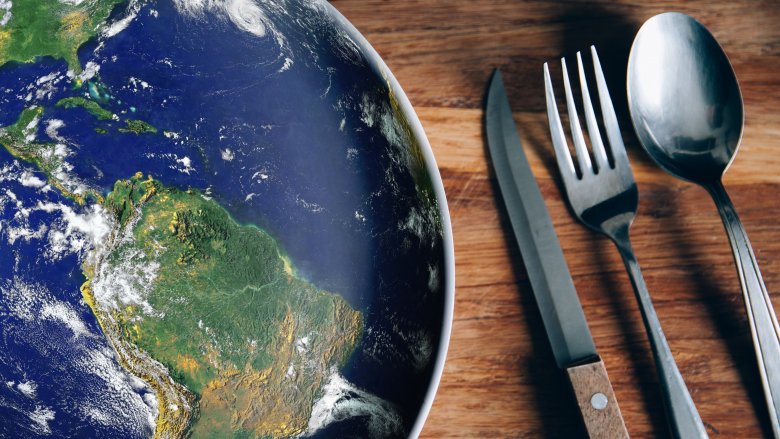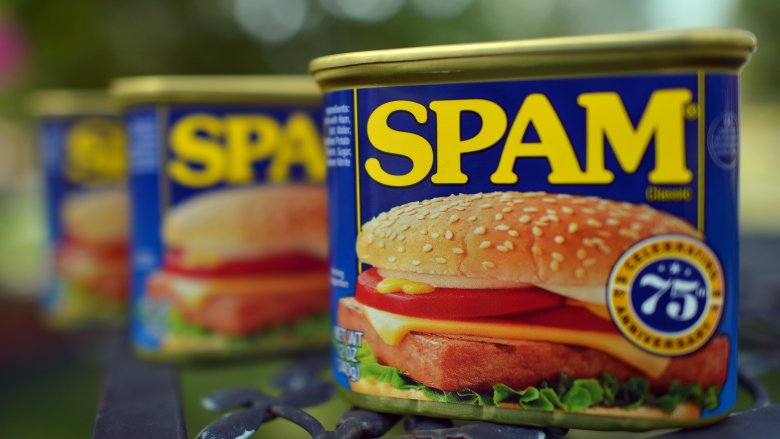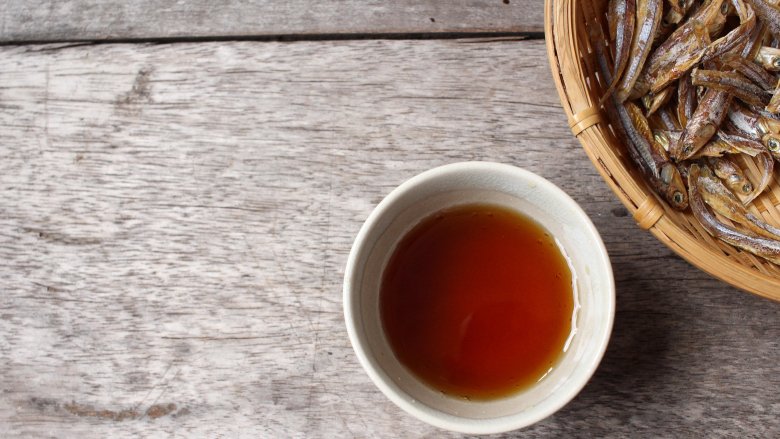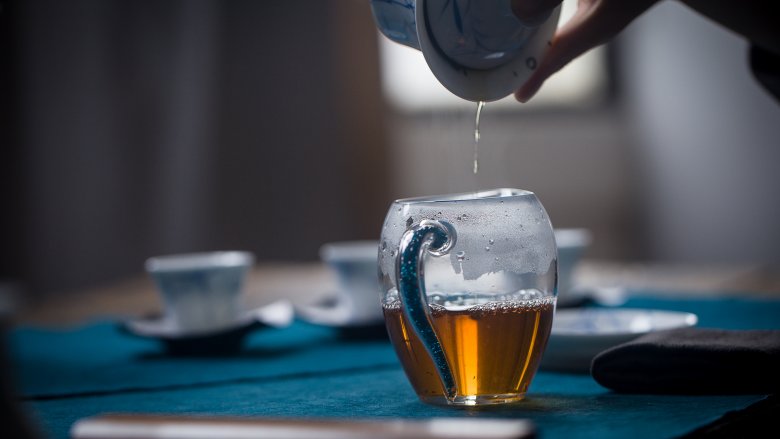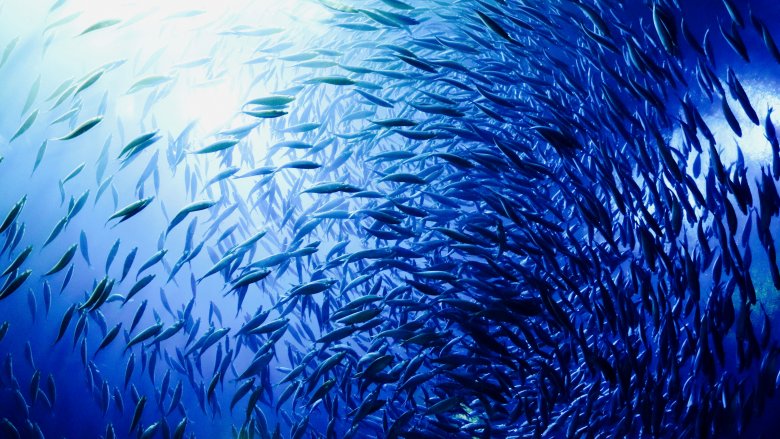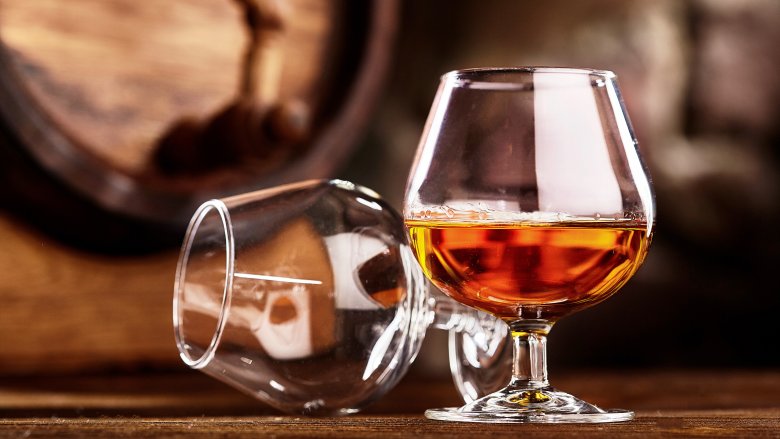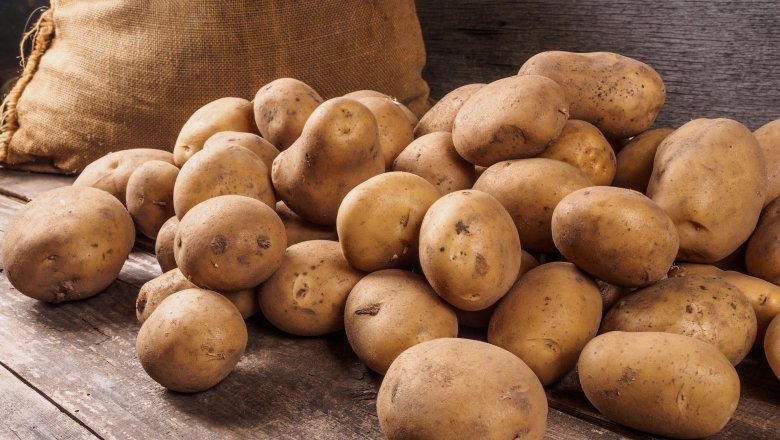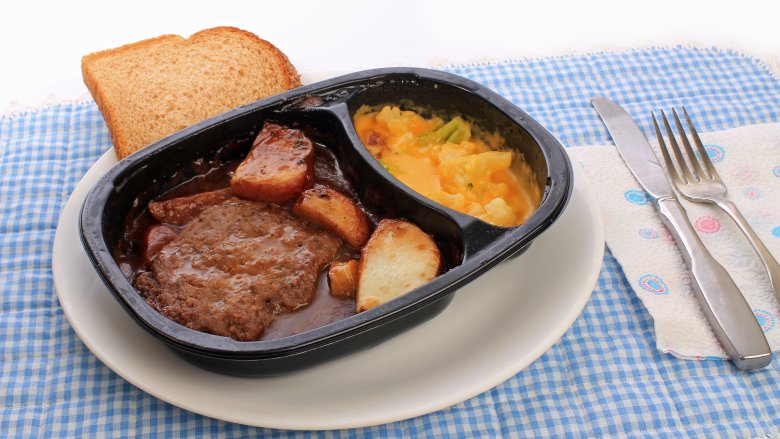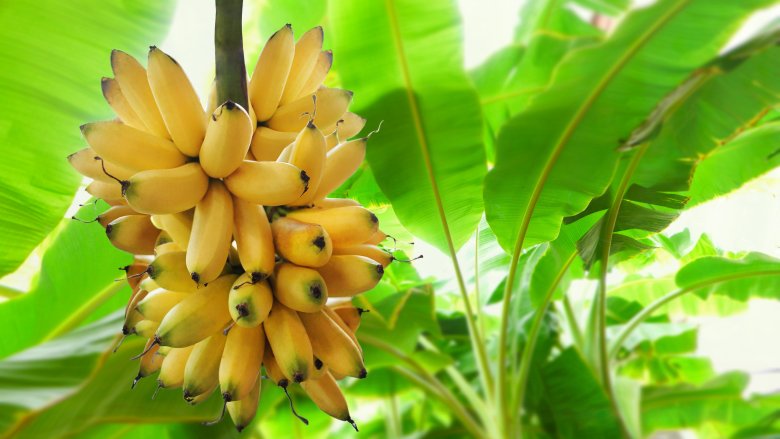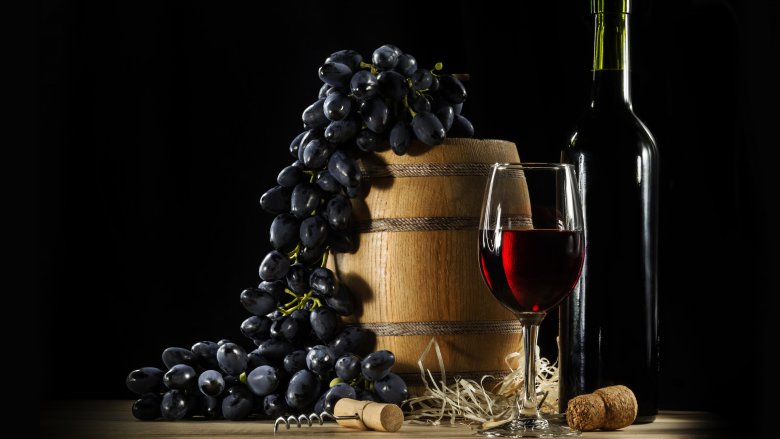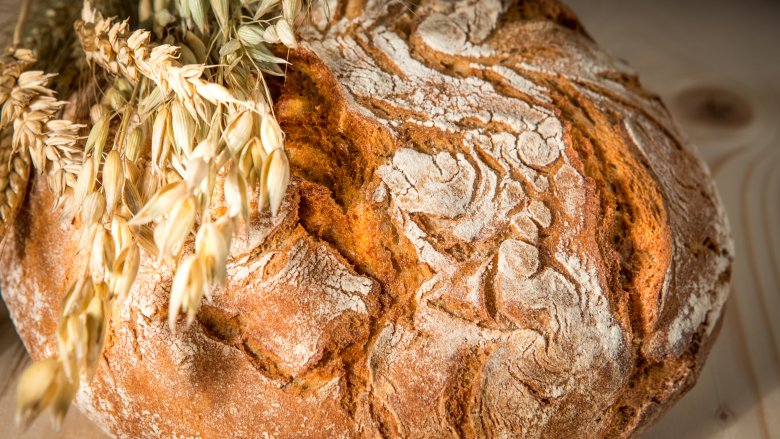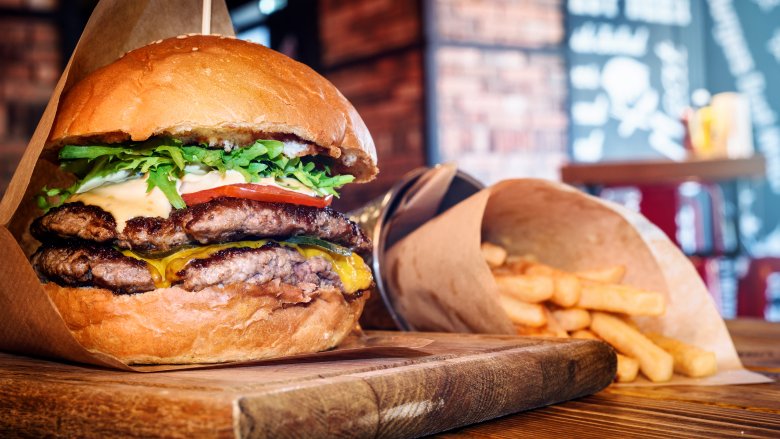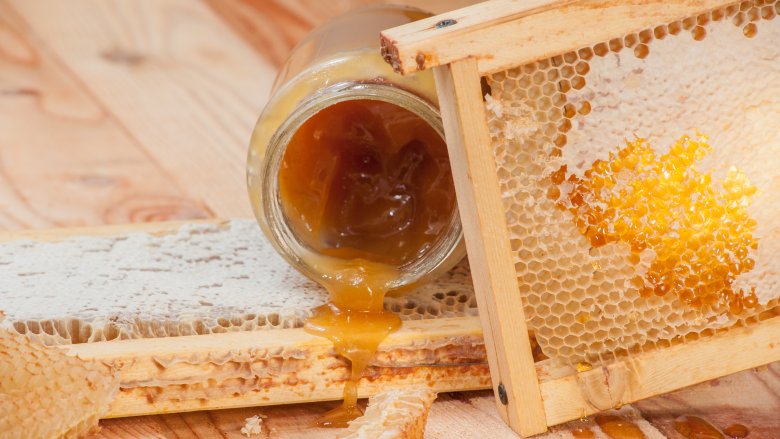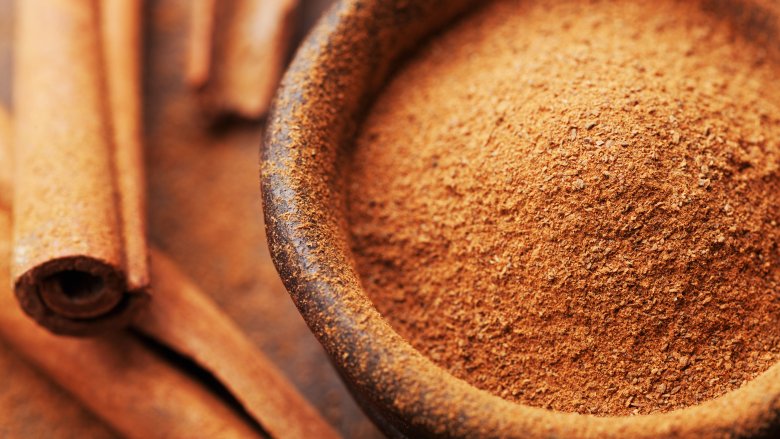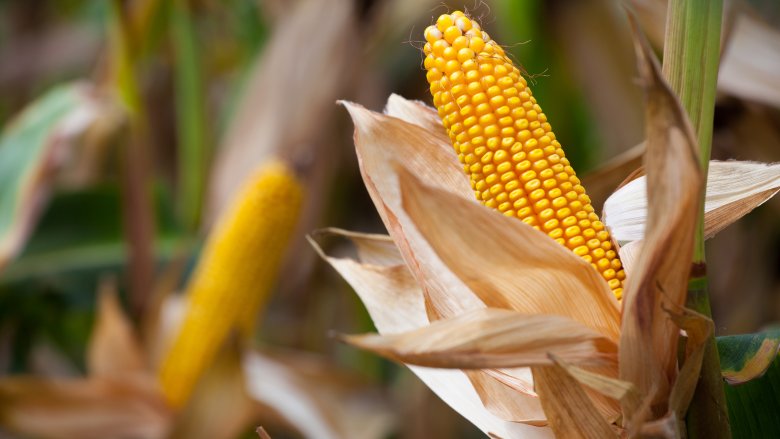Foods That Changed The World
We may receive a commission on purchases made from links.
Food is exciting, and there's no doubt it's a huge part of our lives. That's why we love making it, sharing it, and even documenting it with photographs and on social media. It brings us together and, at the most basic, it keeps us alive. Sure, that's all very impressive, but it's tough to imagine that sometimes, certain foods have an even bigger story to tell. Some foods made such a big impact, they actually changed the world.
It might be something we tend to take for granted, but some foods were so remarkable that when they were introduced, they changed the course of history for entire countries, continents, and civilizations. Let's look at the foods that have done just that. Some of them you might never have heard of, while others will probably be a lot more familiar — some of them might even be on the menu for dinner tonight.
Spam
Spam is truly a love-it-or-hate-it kind of food, but even if you cringe at the thought of it you should give it the credit it's due. Hormel launched Spam in 1937, into a world poised on the brink of war. Timing is everything, and the Smithsonian says that even as the home-front embraced Spam for its versatility, affordability, and convenience, it was being embraced just as wholeheartedly on the other side of the world.
Spam became crucial to the survival of Allied troops, and more than 150 million pounds of Spam made it into the war effort. It was a staple food found in the rations of American soldiers, but enterprising troops found other things to do with it, too. They could also use the grease to waterproof their gear and keep their weapons lubricated. While it's not clear whether or not that's what Hormel had in mind when they started supplying the military, it helped Spam become a global staple and cultural icon. Spam, in turn, helped sustain a fighting force that otherwise might have been unsustainable.
Garum
Garum is one of the world's oldest condiments, and while it's not around in its original form anymore, National Geographic says we have a version in today's fish sauce. It was a staple of Roman cuisine, was made with fermented fish guts and salt, and was used straight, in cooking, or even medicinally.
It sounds disgusting, but it was insanely popular. Garum was in such high demand in the ancient Roman world that it helped drive the creation of major trade networks. Coastal cities were built around fisheries and fish processing factories, which were outfitted with everything from fishing boats to massive storage facilities for fermentation vats. These original cities were situated along the Mediterranean coast and the migratory paths of the fish, and the outposts were then connected by land and sea routes opened for garum trade. Eventually, that helped form the backbone of the massive Roman Empire, with branches of the network reaching as far as Hadrian's Wall.
Tea
Tea is one of the most quintessentially British beverages out there, and it has been since the 19th century. At the time, Britain controlled huge parts of the world, but one thing they didn't have much control over was the price of tea being imported from China. Their shady solution changed entire countries.
Historian and author Sarah Rose says (via NPR) Britain's move to control the tea market was the "greatest single act of corporate espionage in history." They sent a man named Robert Fortune into China, and he was tasked with smuggling both tea plants and trade secrets out of the country. He did, and with his tea seeds and the inside information he garnered from Chinese botanists, he helped set up a tea empire in British-controlled India. It was such a success that he lived to see the Indian tea industry not just thrive, but surpass production in China. Fortune's actions had a major impact on the trade, economy, and agriculture of both China and India, and Rose says Britain's desire for a good, strong, and affordable cup of tea changed China permanently.
Fish and seafood
Do you love seafood? If you do, you have something in common with our most ancient ancestors — and it's a love that may have allowed those same ancestors to thrive where their Neanderthal cousins died.
Science is still trying to figure out exactly what gave Homo sapiens an original leg up, but according to researchers from the Max Planck Institute for Evolutionary Anthropology (via New Scientist), our ancestors may have increased their likelihood of survival by looking to the sea. Tens of thousands of years ago, Neanderthals are thought to have survived mainly on big game animals. A study of ancient sites and bones dating back 40,000 years showed Homo sapiens, on the other hand, were also fishing in both marine and freshwater environments. When the major food sources of the Neanderthals started down the path of extinction, we had other options. It's probably not the only reason Homo sapiens survived (and there are some signs Mediterranean populations of Neanderthals ate things like dolphin), but it's likely one of the things that gave us a major advantage.
Rum
Rum is still a favorite spirit today, but it played a huge role in shaping the world, especially between the 15th and 17th centuries. In case you're not up on your history, that particular time is the Age of Exploration, and it's when Europe was heading farther and farther afield to make the connections that would ultimately bring us all together. Rum was a staple drink on those long sea voyages, says National Geographic, and it's also credited with the rise of the British navy. Great Britain equipped ships and sailors not just with rum, but with grog. This rum-based drink was dosed with lime or lemon juice, and that meant sailors were less likely to die from the scurvy that plagued other nations' fleets.
Once travel to the colonies was opened, New England built entire economies on rum production. From there, it was a major component that made the so-called Triangle Trade possible (via ThoughtCo.). Rum was shipped to Africa's west coast, and was traded for slaves. Those slaves were taken to the West Indies and traded for molasses, which was then taken to New England and used in the production of rum.
Potatoes
It's impossible to imagine what the world would look like without potatoes, because there's a shocking number of times they've helped shape history. The Inca had been growing potatoes for generations (via Sploid), and when explorers brought the lowly tater back to Europe, it was a game-changer. Potatoes are a massive, hardy crop that can feed a ton of people, and the Smithsonian says newly planted potato crops not only ended European famines, but they also allowed countries to feed larger and larger populations. In turn, that gave them an increased labor pool, bigger military might, and an advantage during industrialization.
An over-reliance on the potato has certainly brought famine, too, but it's brought a few other things. When potatoes first made the journey across the Atlantic, they brought with them what would be our first major fertilizer: guano from Peru. Fast forward a bit, and potatoes were also at the heart of a complete overhaul of 20th century agriculture. When potato beetles started destroying crops in the US, farmers started scrambling. That kick-started the modern pesticide industry, and by the 1950s the face of farming had changed — again, all because of the tater.
TV dinners
If you think you always have a ton of Thanksgiving leftovers, at least you never have as many as Swanson did in 1953. They ended up with 260 tons of Thanksgiving turkey that would have gone to waste, if one enterprising man named Gerry Thomas had not decided to package them up on aluminium trays and invent the TV dinner. Important, sure, but world-changing? Absolutely, says the Smithsonian.
By 1954, Swanson had sold more than 10 million turkey dinners alone, and for women who had been stuck in the kitchen cooking dinner for their husbands, it was a game-changer. Suddenly, there was an opportunity to put a meal on the table without cooking something from scratch, and that freed up a whole lot of time for women who were on the verge of the women's rights movement.
That newfound freedom was a good thing, but at the same time TV dinners were becoming popular, so was the TV itself. These conveniently packaged meals meant it was easier for entire families to eat in front of the television instead of around the dinner table, and it's a shift in mealtimes that never shifted back.
Bananas
Believe it or not, entire books could be written on the way bananas changed history. At least one has: Dan Koeppel's Banana: The Fate of the Fruit That Changed the World. Koeppel says (via Salon) that even though we've been eating bananas for around 7000 years, it's really with the 19th century that things started to change in a big and bloody way.
When the banana industry was consolidated, it was under the umbrella of United Fruit (which later bacme Chiquita). Koeppel says it was one of the first multinational companies, and from seed to shelf, the industry that grew up around bananas shaped Latin America. In 1911, a new government was installed in Honduras. It was United Fruit that put them there, after the corporation was crossed by the previous government. That happened a lot, strangely, at the same time the corporation was clearing jungle, uncovering Mayan ruins, building railroads, exiling dictators, and toppling entire countries. Koeppel says Big Banana was every bit as ruthless as Big Oil, and they weren't even above slaughtering hundreds of workers who dared to strike. They did that, too.
Wine
Wine has had a huge impact on the development of the world as we know it, and there are almost countless ways it's shaped history. Let's talk the ancient world, though, because Ancient History has shared some fascinating insights on how the careful science of growing grapes helped ancient Mediterranean civilizations — like the Greeks and the Romans — thrive.
The grape's native range is through the Mediterranean, and even though cultivation started in Egypt, it soon spread through areas where the soil and climate was right for grape-growing and wine-making. This grape and wine trail formed some of the earliest trade routes, and the places that were best suited for grape-growing became some of our oldest settlements and cities. Even the ancient Greeks and Romans were familiar with the idea of terroir, and considered viticulture an art form. VinePair says the ancients' obsession with wine led to another world-changing discovery: advances in pottery and jars, in order to store and transport foodstuffs over long distances.
Bread
According to Lester Brown of the Earth Policy Institute (via Slate), there's one sure-fire way to tell just how close a society is to outright revolt: watch the price of grain. It sounds strange, but rising bread prices and shortages have led to outright revolts before, most famously during the 1789 French Revolution. Bread wasn't the only factor, says the Smithsonian, but it was the major trigger that caused the French public to revolt against and finally overthrow their ruling class.
It happened again in 1795, when bad weather and poor harvests caused a nationwide bread shortage in Britain. Blackwell Reference says there were at least 74 riots across the country, all within a year. And in the US, the Richmond Bread Riot broke out against the backdrop of the Civil War. Virginia had been pushed to famine, and History says that when they marched on the Capitol, they marched for "bread and justice." When their demands were ignored, their rallying cry turned into "bread or blood," and a city full of angry, hungry people looted Richmond.
Hamburgers
Whether you get them at a fast food joint, a fancy restaurant, or make them at home, hamburgers are a major staple. There's nothing wrong with burgers, but studies — like one from Boston University's Slone Epidemiology Center — suggest that hamburgers are becoming a major contributor to the world's obesity epidemic.
They found there's a direct correlation between how often someone eats hamburgers when they go to a restaurant, and how likely they are to pass into the obese weight range. The Guardian found that the industry has come to the defense of the lowly hamburger, and the revelation that greasy, fatty burgers are causing people worldwide to pack on the pounds has resulted in a major re-imagining of the restaurant industry. "Better burgers" became a buzzword, beef gave way to burgers made from other proteins, and premium burgers tried to remind people how good a hamburger can be.
Honey
Honey seems like the last thing you'd expect to be able to stop the relentless onward march of the Roman army, but in the first century, it did exactly that. When the people of what's now Turkey's Black Sea region were faced with the inevitability of falling to Roman rule, they decided to make use of a special kind of honey the region is known for. Modern Farmer says it's called mad honey, and it's made with rhododendron nectar. Eat it in a high enough dose, and you'll start getting blurry vision and the occasional hallucinations, and that's exactly what happened to the Roman troops after they ate the honeycombs the Turkish peoples had left in their path.
The terrifying Roman army was swallowed by the drowsy, hallucinogenic stupor of the honey, and was completely trounced. If you're ever in the neighborhood, you can still get mad honey there — it's still produced in the same region, and in small doses, it's said to give a pleasant sort of high. Eat too much, and it's poison.
Cinnamon (and other spices)
Cinnamon has been a cultural touchstone for a surprisingly long time, dating back at least to ancient Egypt. It was used as an ingredient in the embalming process then, and it was so valuable early land trade routes were established for the trade of cinnamon. Once Europe discovered it, all bets were off.
Part of the reason Christopher Columbus was successful in getting his voyages backed by Spain was because he'd claimed to have found sources of cinnamon in the New World, History says, and he wasn't the only explorer sent off to try to find cinnamon. In 1518, explorers did find it in what's now Sri Lanka, and it kicked off a century's worth of fighting as the Dutch and the Portuguese argued over who would control the cinnamon.
Yale Global says that spices were once as valued as today's oil and gold, and throughout the Middle Ages they drove trade, built entire economies, and shaped thousands of miles of land and sea trade routes.
Corn
According to the BBC, we've been farming corn for around 5000 years. Early corn looked quite a bit different than the sweet corn you might pick up at the farmers' market today, and you can thank our ancient ancestors next time you shuck an ear.
Those ancient ancestors laid the groundwork for domesticating crops around 9000 years ago, when they started selectively growing and planting grasses. Early corn only had a few hard kernels, but throughout the generations they were able to selectively breed corn into what we have today — and that's a huge deal, partially because it proved we could do it.
Columbus took corn back to Europe, but it was never the hit there that it was in America. In the US, it shaped more than diet: it was a currency. Corn paid for slaves, and, The Washington Post says, it's also used for animal feed and fuel. Less than 10 percent of all the corn grown is eaten by people, and that means a world without corn is pretty unthinkable.
#instafood
When we say #instafood, we mean the ultimate 21st century food: the pretty stuff you see when you're scrolling through your Instagram feed. All those food pictures are having a strange effect on the world, and it's not one that's good or expected.
Alton Brown (via Mic) says the Instagram culture of food is having a huge impact on the amount of food waste society churns out, and he's not just talking about attempts at getting that perfect picture. He says more and more "ugly food" is going unsold and ultimately getting thrown away, because it's not as photogenic as people want. The problem is massive, and to show how massive, you just need to look at bananas. The UK throws away 1.4 million bananas a day, and that's insane.
According to The Guardian, we've known about the problem for years. In 2017, they estimated 15 million tons of food get wasted every year, and that's on the rise. The more pretty food we see on Instagram, the more we're encouraged to add our own masterpieces... and that means sorting past the funny-looking veggies and misshapen fruits, even though they're perfectly fine to eat.
